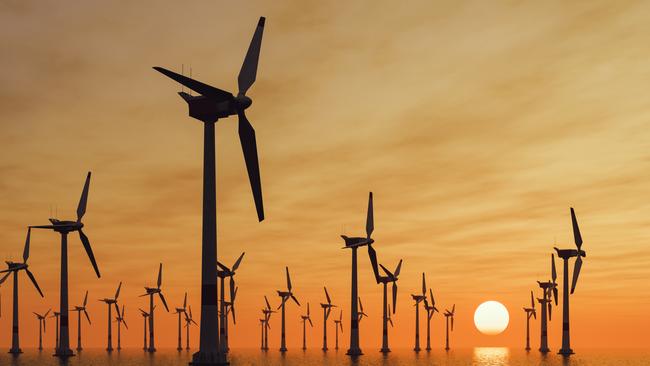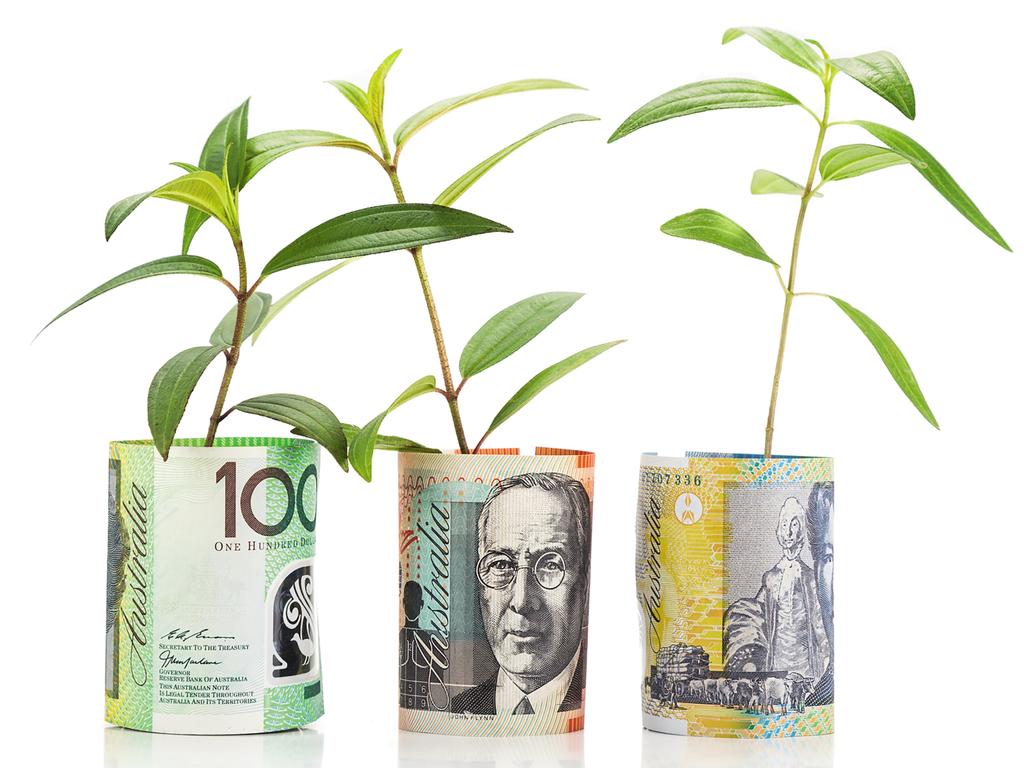Australia faces a big challenge to hit green targets
For Australia to really become a renewable energy superpower, we need a new playbook for the decarbonising ballgame.

Do you remember the Magic Eye puzzles that were popular in the 1990s? You would stare at an image of intricate repetitive patterns, and if you looked for long enough, a 3D image would pop out. Suddenly you were looking at something greater than the sum of the parts.
They were pre-digital magic, amazing and somehow quite entertaining.
Lately, Australia’s energy transition policy agenda has felt a bit like we’re staring at intricate patterns – but without the pop-out image that brings together the parts as a comprehensive whole. There’s been a series of announcements and incremental investments but it’s not clear how it all fits together.
Unfortunately for Australia, and Australians, it’s difficult to see the big picture.
We have definitely made progress in developing and implementing a suite of policy changes to address the transition to net zero, following years of stagnation under the LNP denialists and sceptics. New programs and initiatives were announced in the May 2023 budget and throughout the year, across a range of government departments and agencies, addressing energy efficiency and electrification, mining, skills development, investment and monitoring.
The National Reconstruction Fund will soon start to deploy $15bn with a focus on climate and energy technology investment. There is $21bn new money for the Clean Energy Finance Corporation (CEFC), and the Australian Renewable Energy Agency (ARENA) has expanded grant funding, as well as critical minerals investments, support for household energy upgrades, funding to support regions’ investment in energy, and the establishment of the Net Zero Economy Agency.
All of this is very welcome, but it’s only a small fraction of what is needed, especially in the face of the US Inflation Reduction Act’s (IRA) $1 trillion investment of capital and fiscal support building up manufacturing capacity and decarbonising the US economy, a far-reaching and hugely impactful industry policy with international implications – and the potential to pull green investment away from Australia at a critical juncture in the global transition.
I’ve said it before and I will keep on saying it. For Australia to really become a renewable energy superpower, we need a new playbook for the decarbonising ballgame. A massive national strategic capital public investment program is required to establish Australia as a zero-emissions trade and investment leader. This call was echoed by former Reserve Bank of Australia deputy governor, Guy Debelle, who was reported this week saying that Australia must press on with the hundreds of billions of dollars of investment required to fuel the energy transition.
The Climate Capital Forum and a broad range of energy industry players, unions and NGOs estimate this goal requires $100bn capital to “crowd-in” around $300bn of private capital. We also need to remove investment obstacles and outdated financial structures, making investment in the solutions easier, tax and penalise polluting sectors and, most importantly, work together to establish a loud-and-clear market signal that decarbonising is where the country has to go to be a mover in the future world economy.
Yet 18 months on from the May 2022 election of the Albanese government, it’s still not clear how we comprehensively plan to address the triple crises of the cost of living, energy transition and climate change.
Just one example of many opportunities: a new briefing paper on battery supply chains released this week by industry think tank Beyond Zero Emissions (BZE) projects that “the rapid rollout of batteries can reduce Australia’s national emissions by 23% by 2035 across the stationary energy and transport sectors”.
It finds that the lithium battery market worldwide is estimated to be worth $1.25 trillion by 2030, jumping to $1.9 trillion by 2035, not including the market opportunity for recycling. The group’s modelling shows an Australian lithium battery industry could deliver over $57bn in GDP and 44,000 jobs in 2035 alone.
Instead of simply digging and shipping high-demand minerals such as lithium, copper and nickel as we do now, thereby failing to capture value and supply chains, Australia should invest to refine and process here, re-industrialise our economy so we make and recycle things – such as batteries – and re-skill for the decarbonised economy, addressing energy security and sovereign supply chain issues and building resilience and future workforces.
This would also add complexity to our economy, which currently lags at almost the bottom rung of the global economy complexity charts.
The upcoming COP28 in Dubai is a good place to focus attention and announce greater ambition and strong initiatives aligned with a bold national vision to establish Australia as a zero-emissions superpower. The community and business world at home and abroad – not to mention our Pacific neighbours – want to understand how the Australian government sees the scope of the opportunity and how they can get on board.
Our group, the Climate Capital Forum, stands ready to support and advise the government on the next steps to strategically invest in our own decarbonising efforts – at a scale commensurate with Australia’s generational opportunity – securing our economic and energy independence and helping to drive the global transition to the new world economy underpinned by renewable energy and cleantech.
We’re also ready to look beyond the big picture at home, to the even bigger horizon where the opportunity to host COP31 in 2026 with Pacific nations awaits.
But only if we can show through leadership and commitment, backed by a nation-building scale capital investment program, that we are serious about the global transition to net zero.
Blair Palese is founder of the Climate Capital Forum, an alliance of Australian climate-focused financial experts, investors, philanthropists, industry bodies and non-government organisations. She was named in the most recent edition of The Australian’s Top 100 Green Energy Players.







To join the conversation, please log in. Don't have an account? Register
Join the conversation, you are commenting as Logout